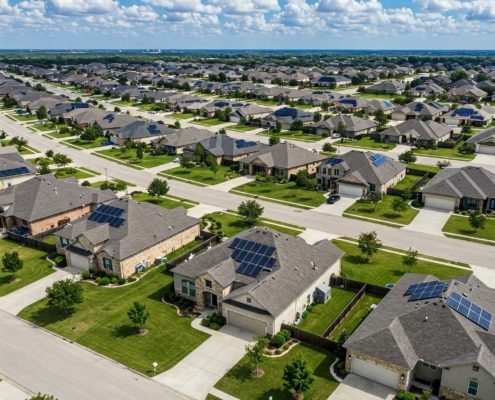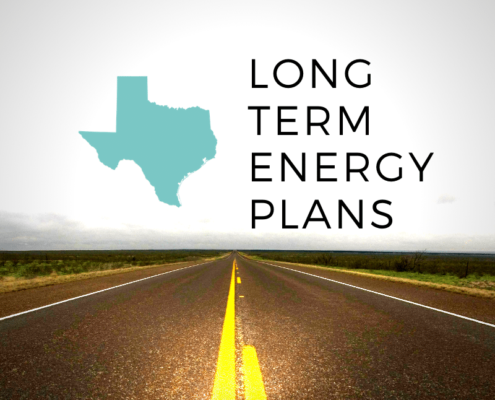Last Updated on July 24, 2022 by Mary Pressler
Lubbock Leads the Nation in Wind Energy Research
Lubbock is the 11th largest city in Texas, with a population of over 327,000 in its metropolitan area. Lubbock has been nicknamed “Hub City” due to its economic importance for surrounding counties, cotton crops, and also for its academic and healthcare institutions. The city has become an wind energy research and technology hub, with multiple projects during the last few decades, including:
- The Scaled Wind Farm Technology facility (SWiFT), part of the National Wind Institute Research Center at Texas Tech University.
- The Pantex Renewable Energy Project, a joint research project between Texas Tech University and the National Nuclear Security Administration (NNSA).
- Group NIRE, a 2,000-acre site with optimal conditions to test wind turbines and other distributed energy systems.
- Reese Technology Center, a 2,467-acre research facility and business park located in a former US Air Force base.
Texas Tech University (TTU) has been involved in all four projects listed above, playing a vital role in Lubbock’s energy research. TTU created the National Wind Institute (NWI) in 2012, which has been involved in research, education and even commercialization. The NWI has studied how extreme weather affects wind turbines, and their findings have been used to improve design standards. They have also studied the performance of large-scale turbines under typical wind conditions, and the applications of wind energy in water treatment and desalination.
Research areas at the NWI include wind engineering and wind hazard mitigation, and they have 56,000 sq.ft. of indoor lab area. The NWI also has a 67-acre test site at the Reese Technology Center, and their equipment includes a 200-meter weather data acquisition tower and a debris impact facility.
Scaled Wind Farm Technology (SWiFT) Facility
The SWiFT facility is the first federally-owned project capable of measuring turbine performance under actual wind farm conditions. The project was funded by the US Department of Energy, and its goals include:
- Studying wind turbine wakes, and reducing negative interactions between turbines.
- Improving wind turbine rotor technology.
- Validating and improving wind turbine simulation models.
SWiFT takes advantage of Lubbock’s weather, which is characterized by constant winds and low turbulence – ideal conditions for research. The facility collaborates with other academic institutions and industry partners.
The Pantex Renewable Energy Project
The Pantex Renewable Energy Project hosts the largest federally-owned wind farm in the US, covering 1,500 acres. A major partner is Siemens Corporation, who provided five utility-scale wind turbines rated at 2.3 megawatts each (11.5 MW in total).
- The project generates 47 million kWh per year, and 47,000 renewable energy credits.
- This electricity is used by the NNSA Pantex Plant, saving $2.8 million/year on average.
- Siemens has an 18-year performance contract with the NNSA, where they are compensated based on the savings achieved.
The Pantex Renewable Energy Project is also part of a research partnership between the National Nuclear Security Administration and Texas Tech University. TTU has access to the project for research activities: data collection and analysis, optimization research, wind technology development, etc. The project has been funded by industry partners who benefit from ongoing research and innovation.
Group NIRE
Group NIRE is also a Texas Tech University project, which has the goal of helping integrate renewable generation and energy efficient technologies with the power grid.
- TTU has provided a 2000-acre field demonstration site for industry, governments and academic institutions.
- The site has favorable wind conditions during most of the year, giving manufacturers the opportunity to test turbines and other distributed energy systems.
Group NIRE also conducts R&D related to grid resilience against emerging threats, such as extreme weather and cybercrime.
Reese Technology Center
Located at the site of the former Reese Air Force Base, this project is both a research facility and an industrial park. The project brings research institutions and industry players together, creating many opportunities for innovation.
- The site covers 2,467 acres, offering 292,715 sq.ft. of office space with meeting areas.
- Texas Tech University has a 67-acre research site at Reese Technology Center, which is used by the National Wind Institute.
Being a former USAF base, Reese Technology Center also has a private airfield and its own electricity grid and data center infrastructure
What Does Energy Deregulation Means For Lubbock?
Texas has a deregulated power sector, which means you can choose your electricity provider. However, joining the deregulated market has been optional for municipal utilities and electric cooperatives. Lubbock is the first city to choose deregulation voluntarily, and this can be expected to change the local energy sector:
- Lubbock Power & Light (LP&L) has been the only electricity provider, but the city is in the process of joining the Oncor service territory.
- With this transition, power consumers will be able to choose among all the retail electricity providers (REPs) in the market.
LP&L connected 70% of its customers to the ERCOT grid in May 2021, and the remaining 30% will be connected in May 2023. This first stage added 470 MW of load and 120 MW of generation to the deregulated energy market.
Lubbock’s deregulation will create many investment opportunities in the region. Oncor has been upgrading the local grid to make the switch possible, since they must have the capacity to absorb the entire LP&L load. Fortunately, this also means that more renewable generation projects can now be built in the region. The new grid infrastructure developed by Oncor includes:
- Multiple switching stations.
- 345,000 V and 115,000 V transmission lines between Lubbock and the ERCOT grid.
These new transmission lines will not only bring electricity from the ERCOT grid to Lubbock. They can also be used to export electricity from the Texas Panhandle to the rest of the state. The new transmission lines connect Lubbock to other grid sections located north, south and east. The Texas Panhandle has abundant solar and wind resources, but development has been limited by the lack of transmission infrastructure in the region.











Trackbacks & Pingbacks
[…] of the key cities in researching wind energy is Lubbock–the 11th largest city in Texas. Some of the Lubbock research centers for wind power are the […]
Leave a Reply
Want to join the discussion?Feel free to contribute!